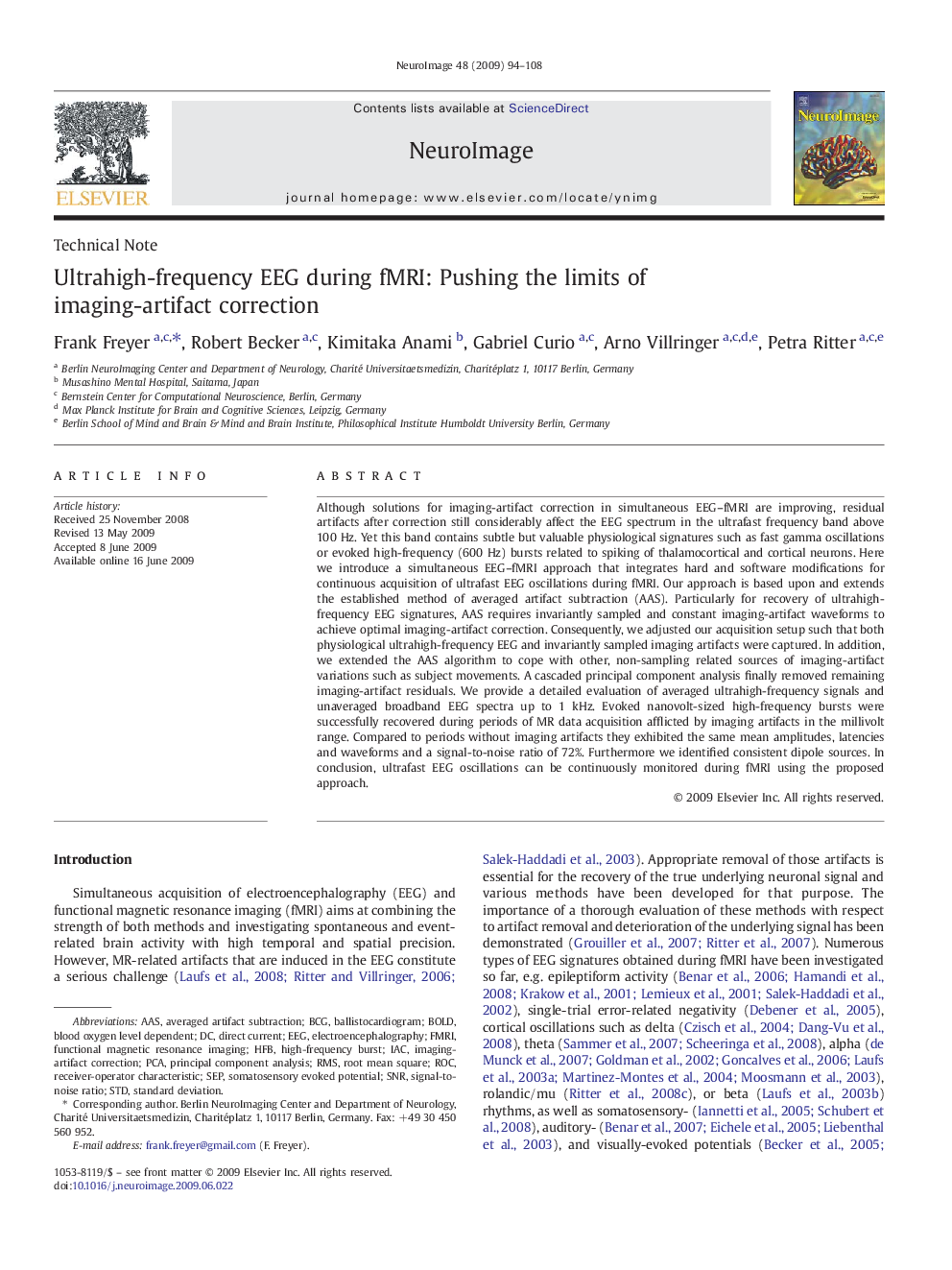| کد مقاله | کد نشریه | سال انتشار | مقاله انگلیسی | نسخه تمام متن |
|---|---|---|---|---|
| 3072661 | 1188799 | 2009 | 15 صفحه PDF | دانلود رایگان |

Although solutions for imaging-artifact correction in simultaneous EEG–fMRI are improving, residual artifacts after correction still considerably affect the EEG spectrum in the ultrafast frequency band above 100 Hz. Yet this band contains subtle but valuable physiological signatures such as fast gamma oscillations or evoked high-frequency (600 Hz) bursts related to spiking of thalamocortical and cortical neurons. Here we introduce a simultaneous EEG–fMRI approach that integrates hard and software modifications for continuous acquisition of ultrafast EEG oscillations during fMRI. Our approach is based upon and extends the established method of averaged artifact subtraction (AAS). Particularly for recovery of ultrahigh-frequency EEG signatures, AAS requires invariantly sampled and constant imaging-artifact waveforms to achieve optimal imaging-artifact correction. Consequently, we adjusted our acquisition setup such that both physiological ultrahigh-frequency EEG and invariantly sampled imaging artifacts were captured. In addition, we extended the AAS algorithm to cope with other, non-sampling related sources of imaging-artifact variations such as subject movements. A cascaded principal component analysis finally removed remaining imaging-artifact residuals. We provide a detailed evaluation of averaged ultrahigh-frequency signals and unaveraged broadband EEG spectra up to 1 kHz. Evoked nanovolt-sized high-frequency bursts were successfully recovered during periods of MR data acquisition afflicted by imaging artifacts in the millivolt range. Compared to periods without imaging artifacts they exhibited the same mean amplitudes, latencies and waveforms and a signal-to-noise ratio of 72%. Furthermore we identified consistent dipole sources. In conclusion, ultrafast EEG oscillations can be continuously monitored during fMRI using the proposed approach.
Journal: NeuroImage - Volume 48, Issue 1, 15 October 2009, Pages 94–108